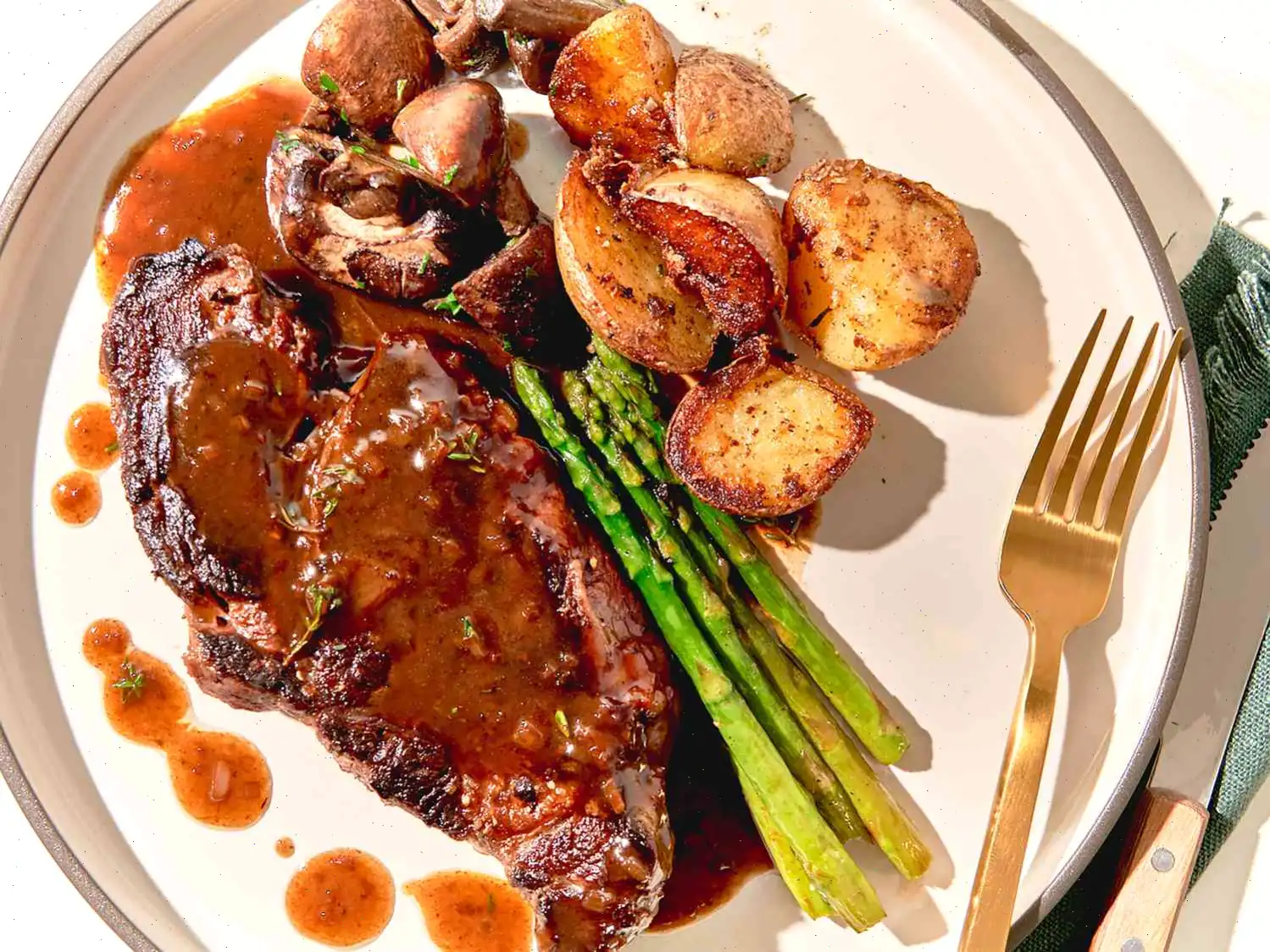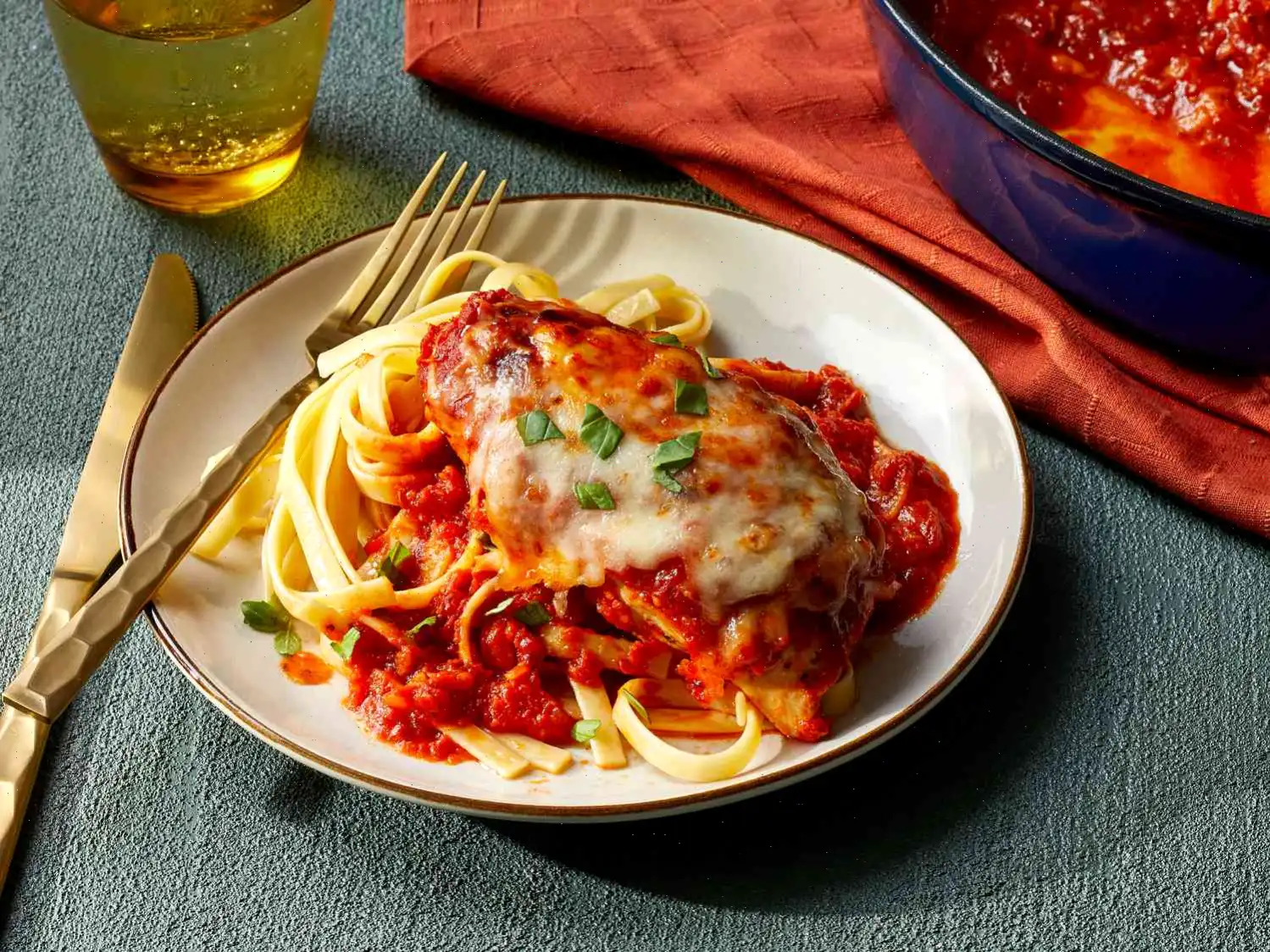
Seared Chuck Eye Steak Recipe
Ingredients
- 4 (8-ounce) beef chuck steaks, well trimmed, at room temperature
- Salt and freshly ground black pepper, to taste
- 2 tablespoons olive oil (or as needed)
- 3 tablespoons butter, divided (or more as needed)
- 2 sprigs fresh thyme (optional)
- 2 cloves garlic, crushed
- 1 shallot, minced
- 1/2 cup beef broth
Directions
- Pat the steaks dry with a paper towel and season generously with salt and pepper.
- Heat the olive oil in a skillet over high heat. Once the oil is hot, place the steaks in the skillet and immediately reduce the heat to medium-high.
- Cook the steaks for 4 minutes on the first side. Then, turn them over, add 1 tablespoon of butter (or more as desired), and drop in the thyme sprigs (if using). Continue to cook for an additional 4 to 6 minutes, depending on your preferred level of doneness.
- Once the steaks are cooked to your liking, remove them from the skillet and let them rest for about 5 minutes.
- While the steaks rest, prepare the pan sauce: remove the skillet from heat and quickly saut the crushed garlic and minced shallot for 1 to 2 minutes using the residual heat from the pan.
- Return the skillet to medium-low heat and pour in the beef broth. Bring the mixture to a boil and reduce the liquid for about 3 minutes.
- Remove the pan from the heat and whisk in the remaining 2 tablespoons of butter until the sauce is smooth and glossy.
- Serve the steaks with the pan sauce drizzled over the top.
Nutrition Facts
Per Serving:
| Calories | 780 |
| Total Fat | 56g (72% Daily Value) |
| Saturated Fat | 23g (114% Daily Value) |
| Cholesterol | 240mg (80% Daily Value) |
| Sodium | 404mg (18% Daily Value) |
| Total Carbohydrate | 4g (2% Daily Value) |
| Dietary Fiber | 1g (3% Daily Value) |
| Total Sugars | 2g |
| Protein | 65g (130% Daily Value) |
| Vitamin C | 3mg (3% Daily Value) |
| Calcium | 49mg (4% Daily Value) |
| Iron | 7mg (38% Daily Value) |
| Potassium | 718mg (15% Daily Value) |
Note: Percent Daily Values are based on a 2,000 calorie diet. Your daily values may vary depending on your calorie needs.
Disclaimer: Nutritional information is not available for all ingredients. Please consult your doctor or dietitian if you are following a medically restrictive diet.
The History and Heritage of Seared Chuck Eye Steak
The chuck eye steak, often referred to as the "poor man's ribeye," has an interesting history rooted in practicality and flavor. Traditionally, this cut comes from the shoulder area of the cow, near the rib section, and was historically considered less desirable due to its slightly tougher texture compared to prime rib or ribeye. Farmers and butchers prized it for its rich marbling and flavor, making it an economical choice for hearty meals. Over time, as cooking techniques improved and searing became more common in home kitchens, the chuck eye steak gained popularity for delivering a steakhouse-quality taste at a fraction of the cost.
Regional Characteristics
While the chuck eye steak is popular across the United States, certain regions have developed their own approaches to preparing it. In the Midwest, it is often simply seasoned with salt and pepper and grilled over an open flame, allowing the natural beef flavor to shine. In the South, it may be marinated or paired with rich pan sauces featuring butter, garlic, and fresh herbs like thyme, which enhances its tenderness. Meanwhile, in Western states, chuck eye steaks are sometimes incorporated into hearty stews or sliced thin for stir-fry dishes, highlighting their versatility.
Differences from Similar Cuts
Chuck eye steak is frequently compared to ribeye due to its proximity on the animal and similar marbling. However, the key differences lie in texture and price. While ribeye tends to be more tender and uniformly fatty, the chuck eye contains slightly more connective tissue, which makes proper searing and resting crucial for optimal tenderness. Unlike sirloin or flank steak, the chuck eye provides a rich, beefy flavor while remaining more affordable than premium cuts, offering an excellent balance of taste and value.
Where Its Commonly Served
Chuck eye steak is often found in casual steakhouses and family-style American restaurants, where it can be served grilled, pan-seared, or broiled. It pairs beautifully with roasted vegetables, mashed potatoes, or a classic pan sauce, making it a versatile option for dinner parties or weekday meals. In some regions, local butcher shops even promote it as a hidden gem cut, appealing to home cooks seeking an impressive steak without breaking the bank.
Interesting Facts
- The chuck eye is the second cut from the ribeye, sometimes called the "little ribeye" because it shares similar marbling characteristics.
- Despite its affordability, it has been gaining recognition among chefs for its robust flavor and ability to take on rich sauces and seasonings.
- When cooked properly, a chuck eye steak can rival the tenderness of more expensive cuts, especially when seared at high heat and allowed to rest.
- Historically, this cut was often reserved for family meals rather than formal dining, but it has steadily earned a place in modern steakhouse menus.
- It is recommended to allow the steak to reach room temperature before cooking to ensure even searing and optimal flavor development.
FAQ about Seared Chuck Eye Steak Recipe
Comments
Amanda Lewis
02/11/2023 08:31:30 AM
Chuck Eye steaks were fantastic about 10 years ago, but now they are getting close to Ribeye prices, maybe just $1 per pound cheaper. My advice would be to go for the ribeyes instead, as they are more reliable and don't require a skilled butcher like the chuck eye does.








